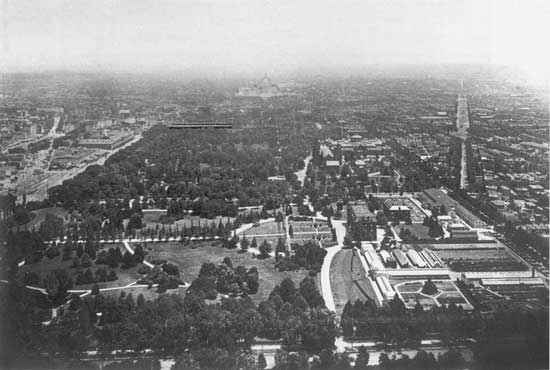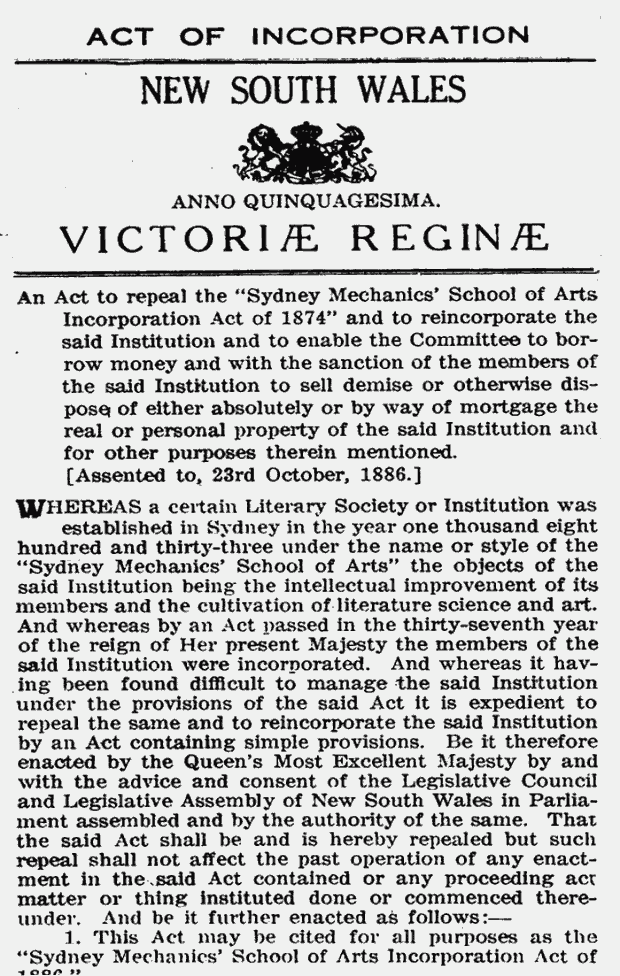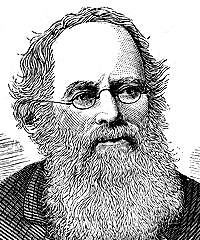|
Babworth House
Babworth House is a heritage-listed former residence and school and now staff accommodation at 103 Darling Point Road, Darling Point in the Municipality of Woollahra local government area of New South Wales, Australia. It was designed in various stages by Mortimer Lewis, Edmund Blacket, and Morrow and De Putron and built from 1912 to 1915 by Messrs W. Gawne and Son. It is also known as Mount Adelaide. The property is privately owned. It was added to the New South Wales State Heritage Register on 13 August 1999. History Early colonial history Originally known by its Aboriginal name Yarranabbee, this suburb on the south side of Sydney harbour was called Mrs Darling's Point in honour of his wife by Ralph Darling, the Colonial Governor of New South Wales from 1825 to 1831. At that time the area was heavily timbered, but after New South Head Road was built in 1831 timber cutters felled many of the trees, and the land was subdivided. Most of the plots, covering in this area, were ... [...More Info...] [...Related Items...] OR: [Wikipedia] [Google] [Baidu] |
Darling Point, New South Wales
Darling Point is a harbourside eastern suburb of Sydney, Australia. It is 4 kilometres east of the Sydney central business district and is part of the local government area of Woollahra Council. Darling Point is bounded by Sydney Harbour to the north, Double Bay to the east, Edgecliff to the south and Rushcutters Bay to the west. Darling Point, renowned for its desirable and expensive real estate, is mostly residential and regarded as one of the most exclusive and prestigious suburbs in Australia. History What is now the Darling Point area was originally known as Eurambi, Yarranabbi, Yarrandabbi and Yaranabe by the local Aboriginal people. It was named Darling Point in recognition of Elizabeth Darling, the wife of New South Wales Governor Ralph Darling. During the Sydney 2000 Olympics, Darling Point hosted the sailing events. Transport Darling Point Road follows the ridge of the headland that is Darling Point. Mona Road and Greenoaks Avenue act as two other main acces ... [...More Info...] [...Related Items...] OR: [Wikipedia] [Google] [Baidu] |
Scottish People
The Scots ( sco, Scots Fowk; gd, Albannaich) are an ethnic group and nation native to Scotland. Historically, they emerged in the early Middle Ages from an amalgamation of two Celtic-speaking peoples, the Picts and Gaels, who founded the Kingdom of Scotland (or ''Alba'') in the 9th century. In the following two centuries, the Celtic-speaking Cumbrians of Strathclyde and the Germanic-speaking Angles of north Northumbria became part of Scotland. In the High Middle Ages, during the 12th-century Davidian Revolution, small numbers of Norman nobles migrated to the Lowlands. In the 13th century, the Norse-Gaels of the Western Isles became part of Scotland, followed by the Norse of the Northern Isles in the 15th century. In modern usage, "Scottish people" or "Scots" refers to anyone whose linguistic, cultural, family ancestral or genetic origins are from Scotland. The Latin word ''Scoti'' originally referred to the Gaels, but came to describe all inhabitants of Scotland. Cons ... [...More Info...] [...Related Items...] OR: [Wikipedia] [Google] [Baidu] |
New South Wales Government Architect
The New South Wales Government Architect, an appointed officer of the Government of New South Wales, serves as the General Manager of the Government Architect's Office (GAO), a multi-disciplinary consultancy operating on commercial principles providing architecture, design, and engineering services, that is an agency of the government within NSW Public Works. Historically, the government architect was in charge of the government's public building projects across the state of New South Wales, Australia. Since the 1990s, when the consultancy service began operating on commercial principles, the Government Architect has reported separately in a second capacity, as an advisor to the government, and serves on various committees and boards in relation to heritage protection, architecture, and design. The first officer in the role, then styled Colonial Architect, was Francis Greenway, appointed in 1816. Colonial architects Francis Greenway (1816–1822) Francis Greenway was the ... [...More Info...] [...Related Items...] OR: [Wikipedia] [Google] [Baidu] |
Sydney Harbour
Port Jackson, consisting of the waters of Sydney Harbour, Middle Harbour, North Harbour and the Lane Cove and Parramatta Rivers, is the ria or natural harbour of Sydney, New South Wales, Australia. The harbour is an inlet of the Tasman Sea (part of the South Pacific Ocean). It is the location of the Sydney Opera House and Sydney Harbour Bridge. The location of the first European settlement and colony on the Australian mainland, Port Jackson has continued to play a key role in the history and development of Sydney. Port Jackson, in the early days of the colony, was also used as a shorthand for Sydney and its environs. Thus, many botanists, see, e.g, Robert Brown's ''Prodromus Florae Novae Hollandiae et Insulae Van Diemen'', described their specimens as having been collected at Port Jackson. Many recreational events are based on or around the harbour itself, particularly Sydney New Year's Eve celebrations. The harbour is also the starting point of the Sydney to Hobart Yacht ... [...More Info...] [...Related Items...] OR: [Wikipedia] [Google] [Baidu] |
Double Bay, New South Wales
Double Bay is a harbourside eastern suburb of Sydney, in the state of New South Wales, Australia 4 kilometres east of the Sydney central business district. It is the administrative centre of the local government area of the Municipality of Woollahra. Double Bay takes its name from the bay of Sydney Harbour and refers to the two geographical formations between Point Piper and Darling Point, which are interrupted by a miniature point in between. The eastern part is also known as Blackburn Cove. It has some of the most expensive real-estate in Australia and is colloquially often referred to as "Double Pay", a term coined due to the high income of people living there, and the nature of the shopping area which features high-end fashion labels. History Double Bay developed soon after initial European settlement in 1788. In the early years of the colony, Double Bay was used as shelter for fishermen who would regularly fish around the harbour. Farming mostly cattle and lettuce a ... [...More Info...] [...Related Items...] OR: [Wikipedia] [Google] [Baidu] |
Andrew Jackson Downing
Andrew Jackson Downing (October 31, 1815 – July 28, 1852) was an American landscape designer, horticulturist, and writer, a prominent advocate of the Gothic Revival in the United States, and editor of ''The Horticulturist'' magazine (1846–52). Downing is considered to be a founder of American landscape architecture. Early life Downing was born in Newburgh, New York, to Samuel Downing, a wheelwright and later nurseryman, and Eunice Bridge. After finishing his schooling at sixteen, he worked in his father's nursery in the Town of Newburgh, and gradually became interested in landscape gardening and architecture. He began writing on botany and landscape gardening and then undertook to educate himself thoroughly in these subjects. He married Caroline DeWint, daughter of John Peter DeWint, in 1838. Professional career His official writing career started when he began producing articles for various newspapers and horticultural journals in the 1830s. In 1841 his first book, ... [...More Info...] [...Related Items...] OR: [Wikipedia] [Google] [Baidu] |
James Busby
James Busby (7 February 1802 – 15 July 1871) was the British Resident in New Zealand from 1833 to 1840. He was involved in drafting the 1835 Declaration of the Independence of New Zealand and the 1840 Treaty of Waitangi. As British Resident, he acted as New Zealand's first jurist and the "originator of law in Aotearoa", to whom New Zealand "owes almost all of its underlying jurisprudence". Jamieson, Nigel (1986), "The Charismatic Renewal of Law in Aotearoa", ''New Zealand Law Journal'', July 1986, pp. 250–255 Busby is regarded as the "father" of the Australian wine industry, as he brought the first collection of vine stock from Spain and France to Australia.J. Robinson (ed.) ''The Oxford Companion to Wine''. 3rd edition. p. 116. Oxford University Press, 2006 Life He was born in Edinburgh, Scotland, the son of English engineer John Busby and mother Sarah Kennedy. His parents and he emigrated from Britain to Port Jackson, New South Wales, in 1824. Busby received a Grant ... [...More Info...] [...Related Items...] OR: [Wikipedia] [Google] [Baidu] |
Sydney Mechanics' School Of Arts
The Sydney Mechanics' School of Arts (SMSA) is the longest running School of Arts (also known as a " Mechanics' Institute") and the oldest continuous lending library in Australia. Founded in 1833, the school counted many of the colony's educated elite as members, and quickly positioned itself as a centre for social change and intellectual life of the city of Sydney with a program of public lectures, courses, lending library and other activities based on its mission of adult education. Now in new premises, the SMSA continues to offer public education programs and grants today. In 2011 the SMSA opened ''The Tom Keneally Centre'', which holds the research collection of world-renowned author Thomas Keneally from his private collection and memorabilia. History By the early 1830s, Sydney Town had come a long way from its origins as a convict colony four decades earlier and free settlers were increasing in numbers. John Dunmore Lang wished to build an Australian College in Sydney ... [...More Info...] [...Related Items...] OR: [Wikipedia] [Google] [Baidu] |
Camden Park, New South Wales
Camden Park is just outside the metropolitan area of Sydney, Australia. It was named after John Macarthur's estate '' Camden Park''. While most of the suburb is farmland in Wollondilly Shire, the northern part of Camden Park has recently undergone suburban development as an extension of the suburb of Camden South. Camden South is in the Camden Council area and is part of Greater Sydney. The new development is named Bridgewater Estate and features a comprehensive Development Control Plan to guide the style outcomes of the locality. Population In the 2016 Census, there were 2,238 people in Camden Park. 86.3% of people were born in Australia and 92.9% of people spoke only English at home. The most common responses for religion were Catholic 38.9%, Anglican 27.6% and No Religion 16.9%. Heritage listings Camden Park has a number of heritage-listed sites, including: * Elizabeth Macarthur Avenue: Camden Park Estate The Camden Park Estate incorporating the Belgenny Farm is a heri ... [...More Info...] [...Related Items...] OR: [Wikipedia] [Google] [Baidu] |
William Macarthur
The Honourable Sir William Macarthur (December 1800 – 29 October 1882) was an Australian botanist and vigneron. He was one of the most active and influential horticulturists in Australia in the mid-to-late 19th century. Among the first viticulturists in Australia, Macarthur was a medal-winning wine-maker, as well as a respected amateur botanist and noted plant breeder. Biography William Macarthur was born at Parramatta in December 1800, the fifth son of John and Elizabeth Macarthur, pioneers of the Australian wool industry. He was educated in England at Rugby School, returned to Australia with his father in 1817, and assisted in the management of his estates. These estates included land controlled by the Macarthurs south along the Murrumbidgee River from Gundagai. Brothers James and William Macarthur stocked 'Nangus Station' with cattle in 1831. The island in the middle of the River at Nangus is marked as one of the early goldfields and named "M'Arthur Island". The island ... [...More Info...] [...Related Items...] OR: [Wikipedia] [Google] [Baidu] |
Elizabeth Bay House
Elizabeth Bay House is a heritage-listed Colonial Regency style house and now a museum and grotto, located at 7 Onslow Avenue in the inner eastern Sydney suburb of Elizabeth Bay in the City of Sydney local government area of New South Wales, Australia. The design of the house is attributed to John Verge and John Bibb and was built from 1835 to 1839 by James Hume. The grotto and retaining walls were designed by Verge and the carriage drive on Onslow Avenue was designed by Edward Deas Thomson and built from 1832 to 1835 by convict and free artisans under the direction of Verge. The property is owned by Sydney Living Museums, an agency of the Government of New South Wales. Known as "the finest house in the colony", Elizabeth Bay House was originally surrounded by a garden, and is now situated within a densely populated inner city suburb. Elizabeth Bay House is a superb example of Australian colonial architecture, best known for its central elliptical saloon with domed lantern ... [...More Info...] [...Related Items...] OR: [Wikipedia] [Google] [Baidu] |
Alexander Macleay
Alexander Macleay (also spelt McLeay) MLC FLS FRS (24 June 1767 – 18 July 1848) was a leading member of the Linnean Society, a fellow of the Royal Society and member of the New South Wales Legislative Council. Life Macleay was born on Ross-shire, Scotland, eldest son of William Macleay, provost of Wick. Alexander had a classical education, before relocating to London and becoming a wine merchant with his business partner William Sharp – after whom his first son was named. In 1795 he was elected a fellow of the Linnean Society of London, also serving as its secretary, and was also appointed chief clerk in the prisoners of war office. When the office was linked with the Transport Board after war broke out, Macleay became head of the correspondence department and by 1806 secretary. The board was abolished in 1815, and Macleay retired on an annual pension, of £750. Macleay's chief natural history interest was entomology, principally lepidoptery, and he possessed the fines ... [...More Info...] [...Related Items...] OR: [Wikipedia] [Google] [Baidu] |

_Bayliss.jpg)




